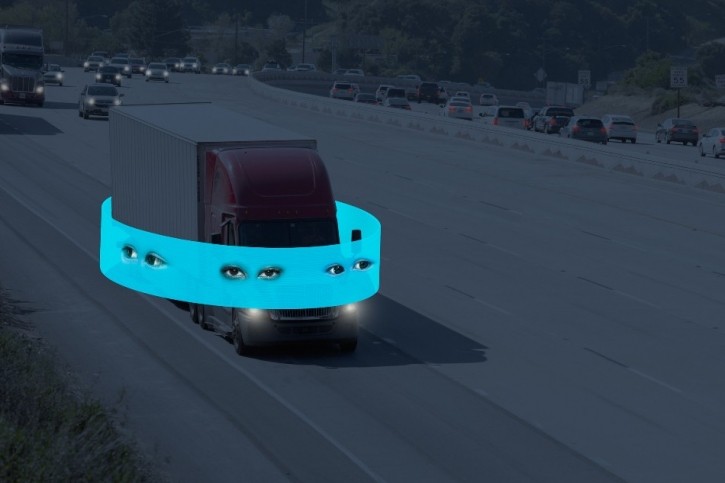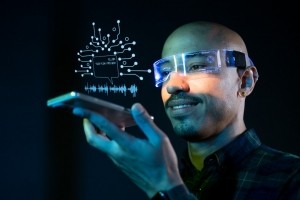Artificial Intelligence - special report
How AI can improve product quality and consumer experience in confectionery

Delegates at the high-powered conference heard how AI can benefit the confectionery industry by enhancing efficiency, improving product quality, and optimizing various processes.
Ten ways AI can help confectionery brands rise to the top
- Quality control and inspection: AI-powered computer vision systems can be employed to inspect and ensure the quality of confectionery products on the production line. This includes identifying defects, ensuring proper packaging, and maintaining consistent product quality.
- Production optimization: AI algorithms can analyse production data to optimize manufacturing processes. This includes managing inventory levels, predicting demand, and adjusting production schedules to minimize waste and maximize efficiency.
- Recipe and flavor optimization: AI can assist in developing new and innovative flavour combinations by analysing consumer preferences, market trends, and existing recipes. This can help confectionery companies create products that cater to evolving consumer tastes.
- Supply chain management: AI can improve supply chain efficiency by predicting demand, optimizing inventory levels, and streamlining logistics. This can result in reduced costs and improved responsiveness to market changes.
- Personalized marketing and recommendations: AI can analyse customer data to provide personalized product recommendations and targeted marketing strategies. Tailoring promotions and advertisements to individual preferences can enhance customer engagement and loyalty.
- Energy consumption optimization: AI systems can analyse energy usage patterns in manufacturing facilities and identify opportunities for energy conservation, helping confectionery companies reduce their environmental footprint and operational costs.
- Predictive maintenance: AI algorithms can monitor equipment health and predict when machinery will likely fail, enabling proactive maintenance to minimize downtime and improve overall production efficiency.
- Customer service and chatbots: AI-powered chatbots can enhance customer service by providing instant responses to customer queries, assisting with order tracking, and offering product recommendations based on individual preferences.
- Market trend analysis: AI can analyse market trends, social media, and consumer sentiment to provide insights into changing preferences and help confectionery companies stay ahead of the competition.
- Nutritional analysis and labelling: AI can assist in analysing the nutritional content of confectionery products, helping companies comply with regulations and provide accurate information on product labels.
Representatives from retailers and brands listened intently as Paul Tepfenhart, global director of retail & consumer solutions at Google Cloud, said: “The world's changed in the last five years. Customers are expecting more from us. They want seamless experiences. They want to be able to use digital and then go in the store, and they want to do all this without having to do special contortions.”
Everything starts with data .... You've got to get the data ecosystem in place to understand your consumer, your products, and your business, and when you have that, you can use AI in powerful ways -- Paul Tepfenhart, global director of retail & consumer solutions, Google Cloud
He warned organizations will switch if they don't get the desired experience. “And that's echoing throughout the surveys that we're seeing.”
Tepfenhart said those who leverage [AI] will be further ahead in their customer relationships, and that should resonate strongly with CPGs (consumer packaged goods).
“If you're a retailer, this is a big marketing conversation; it's also a big conversation for marketing, but it has other tentacles.”
He said there has been a lot of focus on things like cost optimization, ‘how am I going to get my revenue growing?’ and, of course, supply chain challenges. “Underneath all those, one of the most effective ways to improve your business is leveraging AI.”
He warned delegates: “Digital commerce is also here to stay … And if you're a CPG out there, and you don't believe that you need to sell online, okay, maybe, but you definitely need a solid online presence that's talking about your brand. It's talking about your profits.”
In his opinion, the confectionery industry is in a transformative moment. He compared it to other great epochs, like the invention of steam power, electricity, and IT at the beginning of the 1960s.
Streamline operations
Tepfenhart gave examples of how companies, including Macy’s, Ocado, and Marks & Spencer, have all used cloud-based data and artificial intelligence to streamline operations, personalize shopper experiences, and increase staff productivity.
He showed how UPS asked Google Cloud to help examine its entire logistics network. The company leveraged AI to save $400 million by optimising routes in order and stacking trucks, combining inbound logistics with outbound to the customer.
“Everything starts with data,” he said. “You've got to get the data ecosystem in place to understand your consumer, your products, and your business, and when you have that, you can use AI in powerful ways.”
He said generative AI could also help marketing teams with their campaigns, making them more effective and taking a lot of the ‘mundane stuff’ off the table to give humans more time to be creative.
AI is not a replacement for jobs
Allaying fears that AI will take jobs in the future, he said: “This is not a replacement for your marketing team or your agency. What it is is a huge augmentation."
AI can help businesses in many other ways, Tepfenhart said, from helping HR with recruitment processes, sales with procurement contracts, and helping IT departments write specific code.
“It has tremendous potential, and the power is in your hands to pick where to start. In my view, there is no option not to start. It will happen across every area you touch in your business. It's either going to happen with you trailing, or it's going to happen with you leading,” he said at the end of his session.
ChatGPT
Conor Grennan, Dean of MBA Students at NYU Stern and head of GenerativeAi@ Stern, helped unlock the powerful ChatGPT for personal use and explained how teams can also use it to gain a competitive edge.
He discussed integrating generative AI into businesses, emphasizing the need for human-like approaches to behavioural changes and advised on the importance of using plain language in consulting.
He explained that ChatGPT's capabilities in content creation need context. He also stressed the need for good leadership and a purposeful culture to leverage AI's benefits fully - only then will AI's potential to transform organisations, increase productivity, and improve operations.
Digital transformation
“When we talk about integrating generative assets into our companies. It looks like a digital transformation. And if you've gone through a digital transformation, you know what that's like…“ you get the new software like ServiceNow or Salesforce or whatever it is, and then you burn down your old model, whatever that old model was, and then you have training videos, and you get everybody up to speed like that …
“AI doesn't work like that because it doesn't act like software. This is software that literally acts like a human. It’s not like a digital transformation; what it is is actually change management and leadership. It's about behaviour.”
Sam Altman, head of open AI, said people think ChatGPT will take jobs. It doesn't, Grennan said. It takes tasks and speeds them up.
He explained that AI has been around for a long time, but it exists in a tight user interface behind the scenes, like a spellcheck, for example. The difference today is that you can now use AI for anything, good and bad - and even to sell more candy if placed in the right hands.









